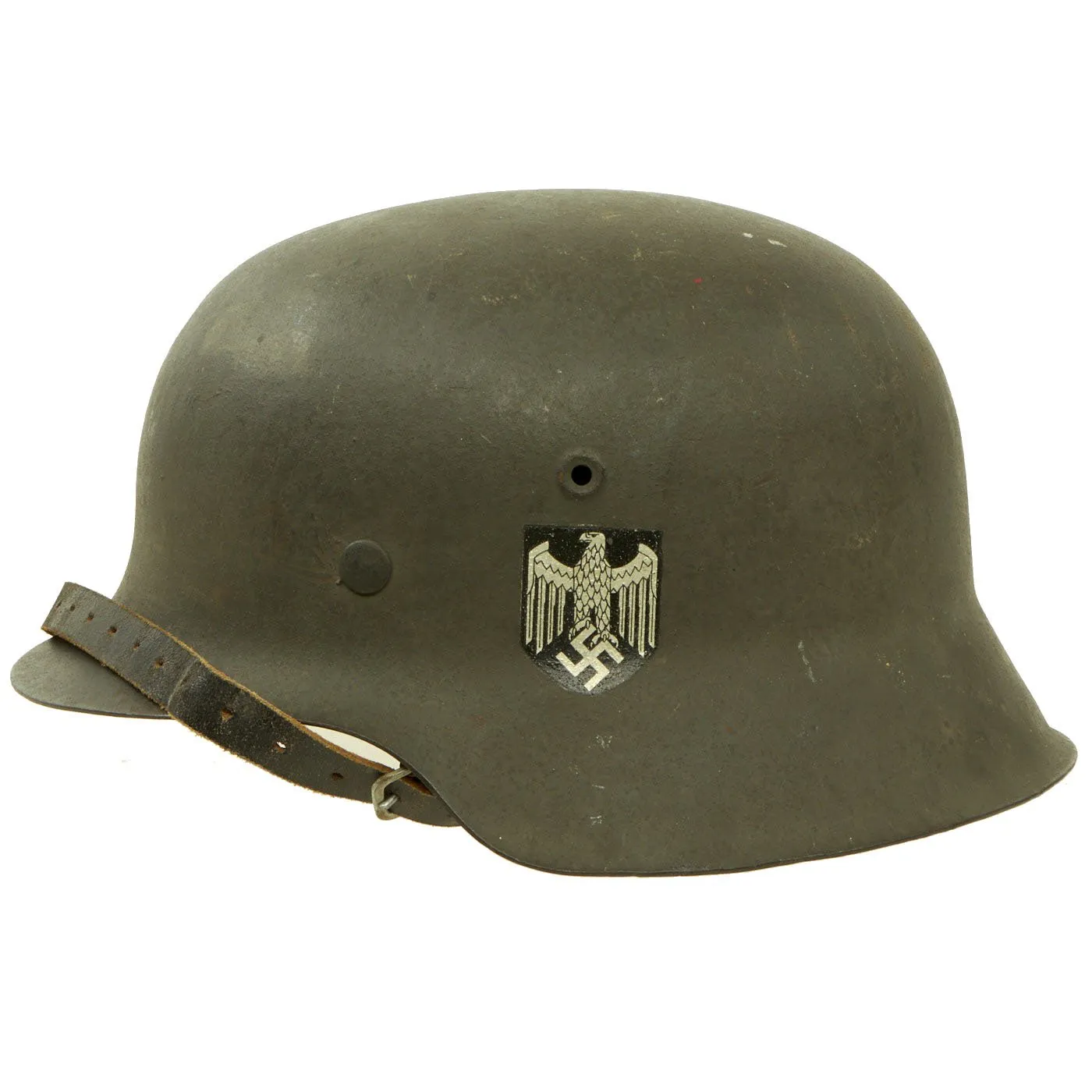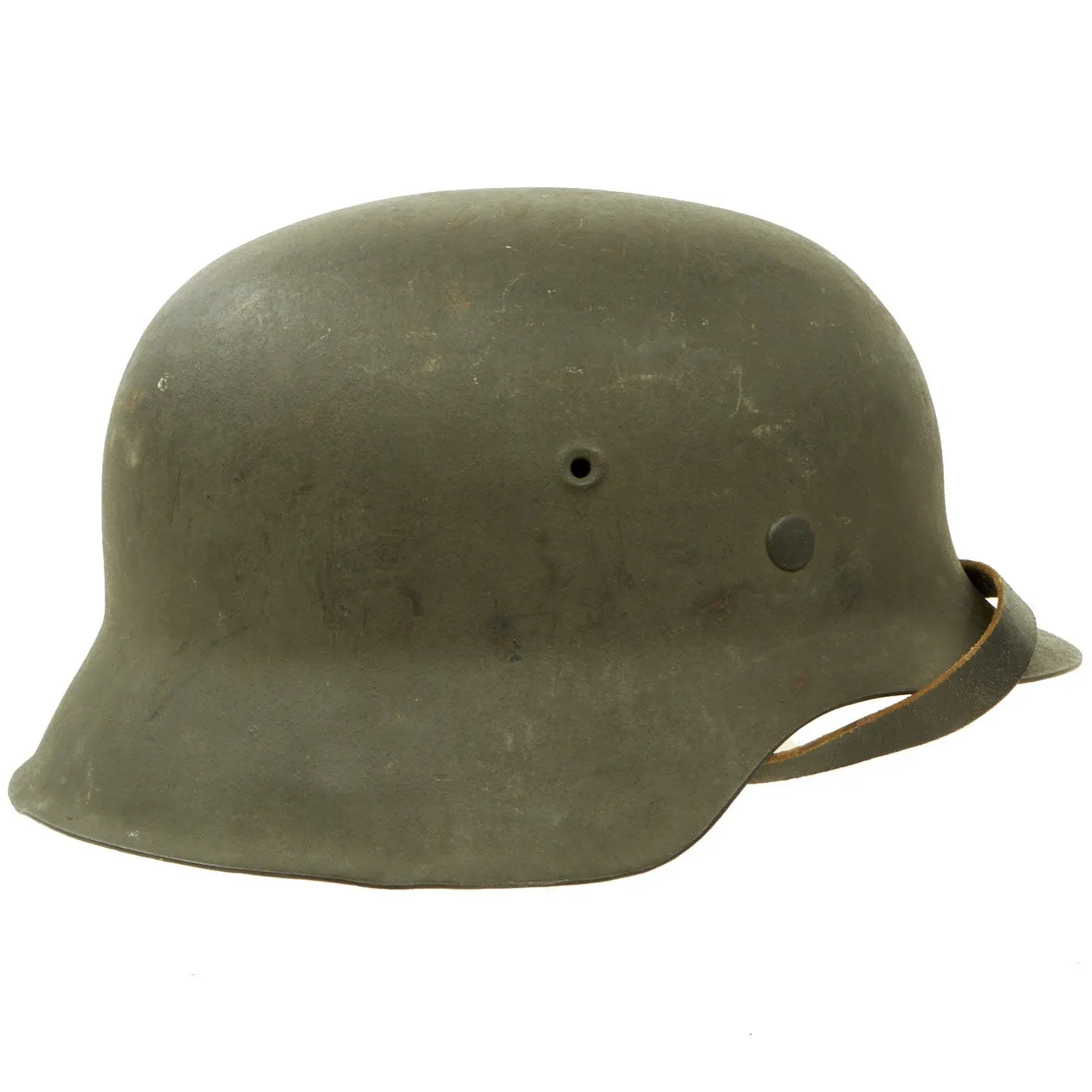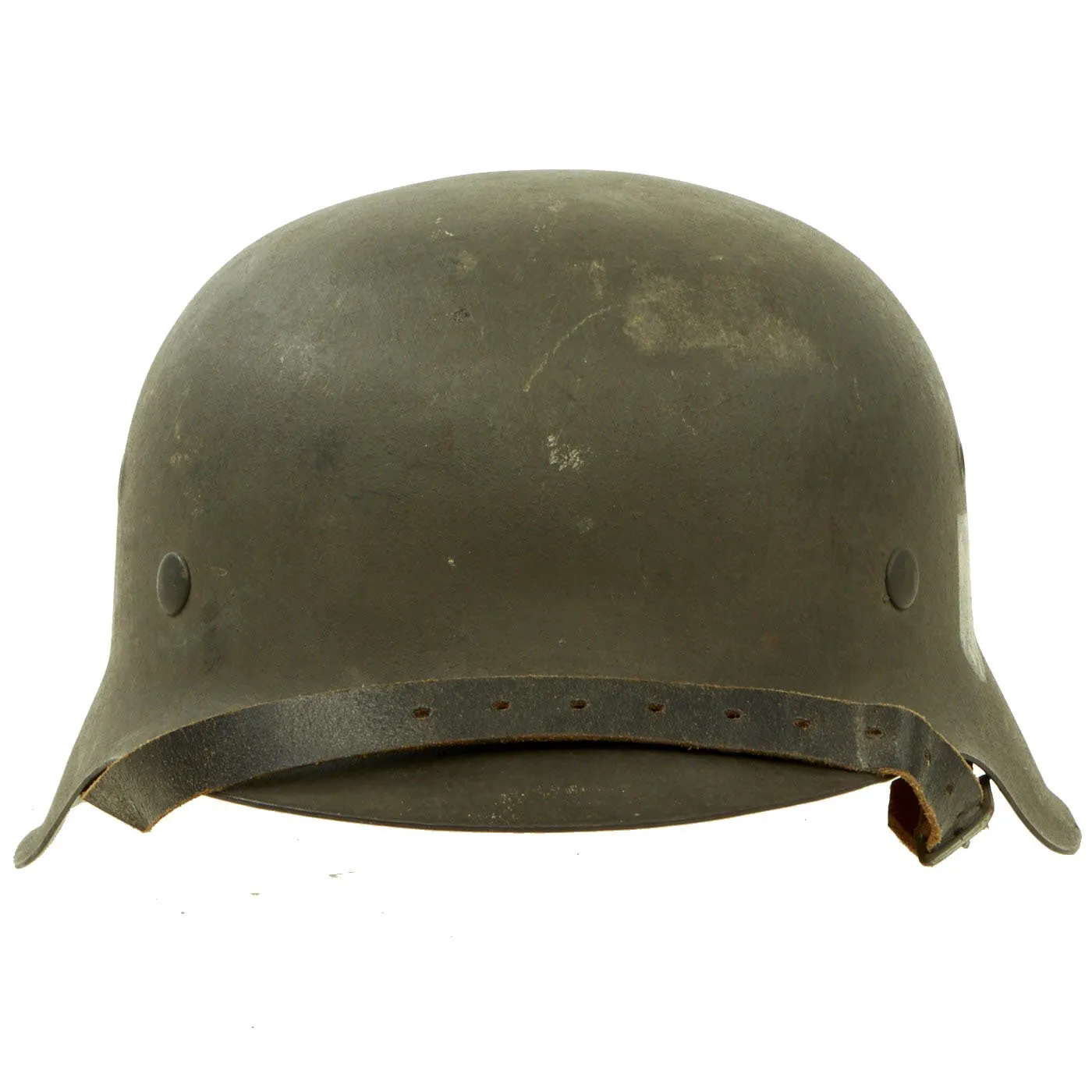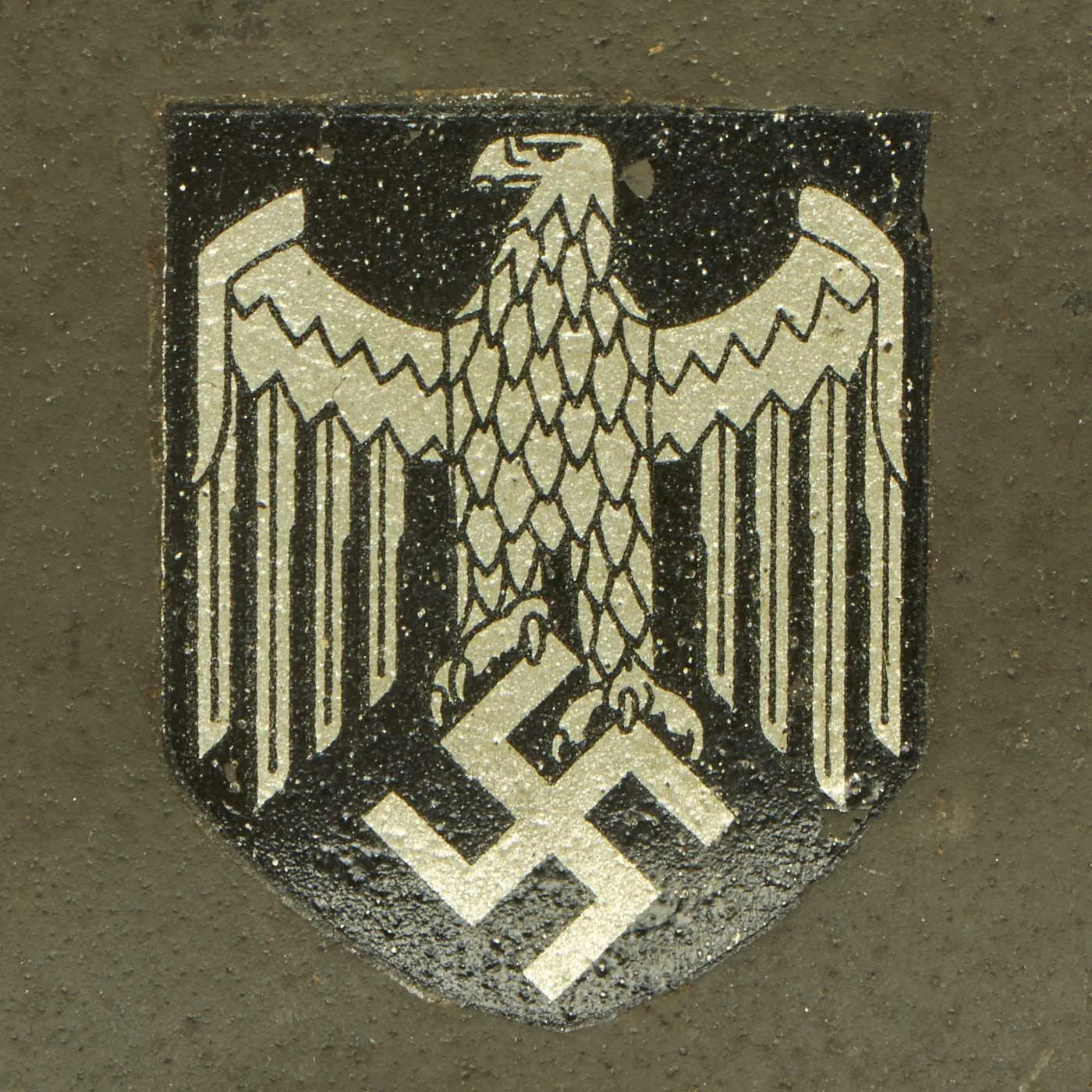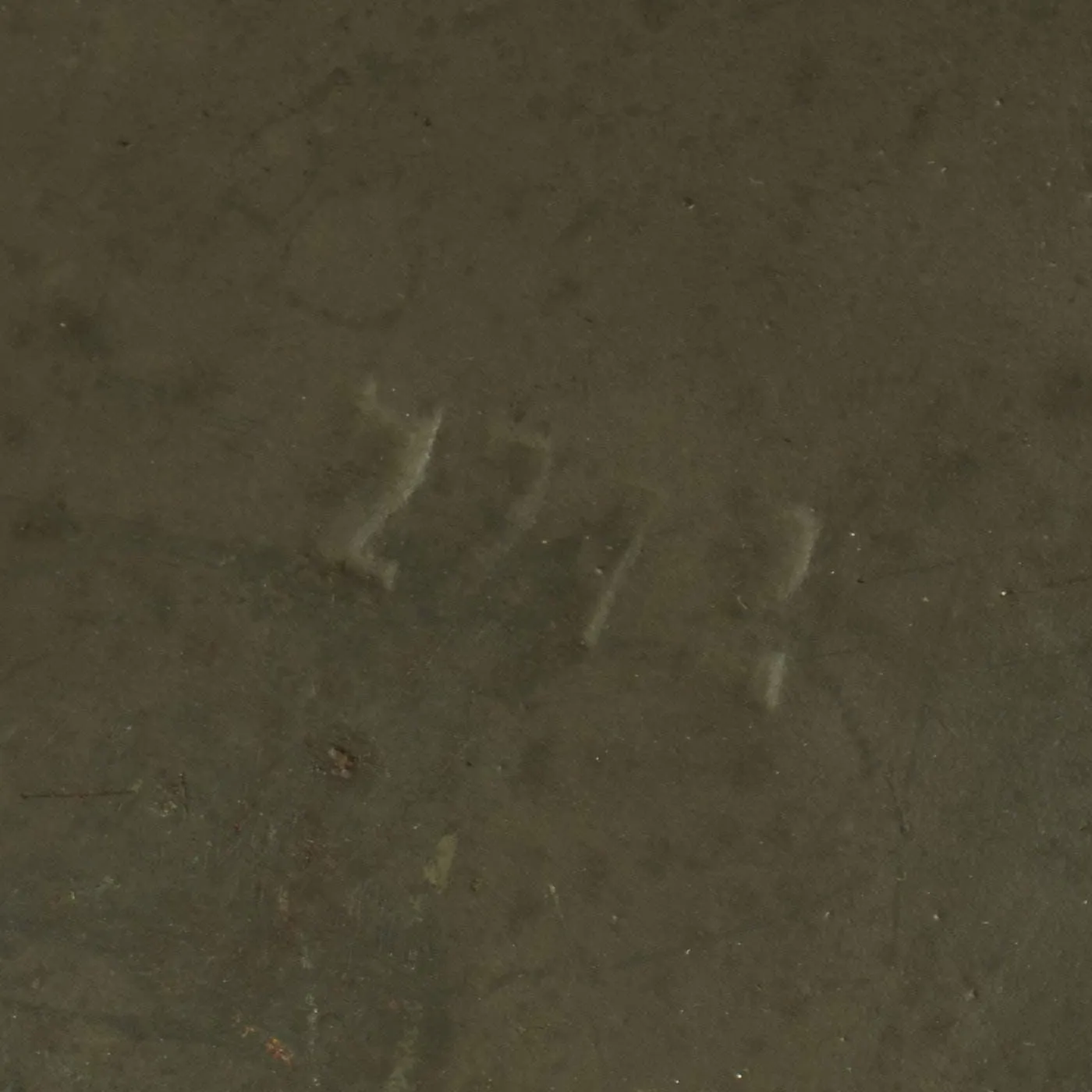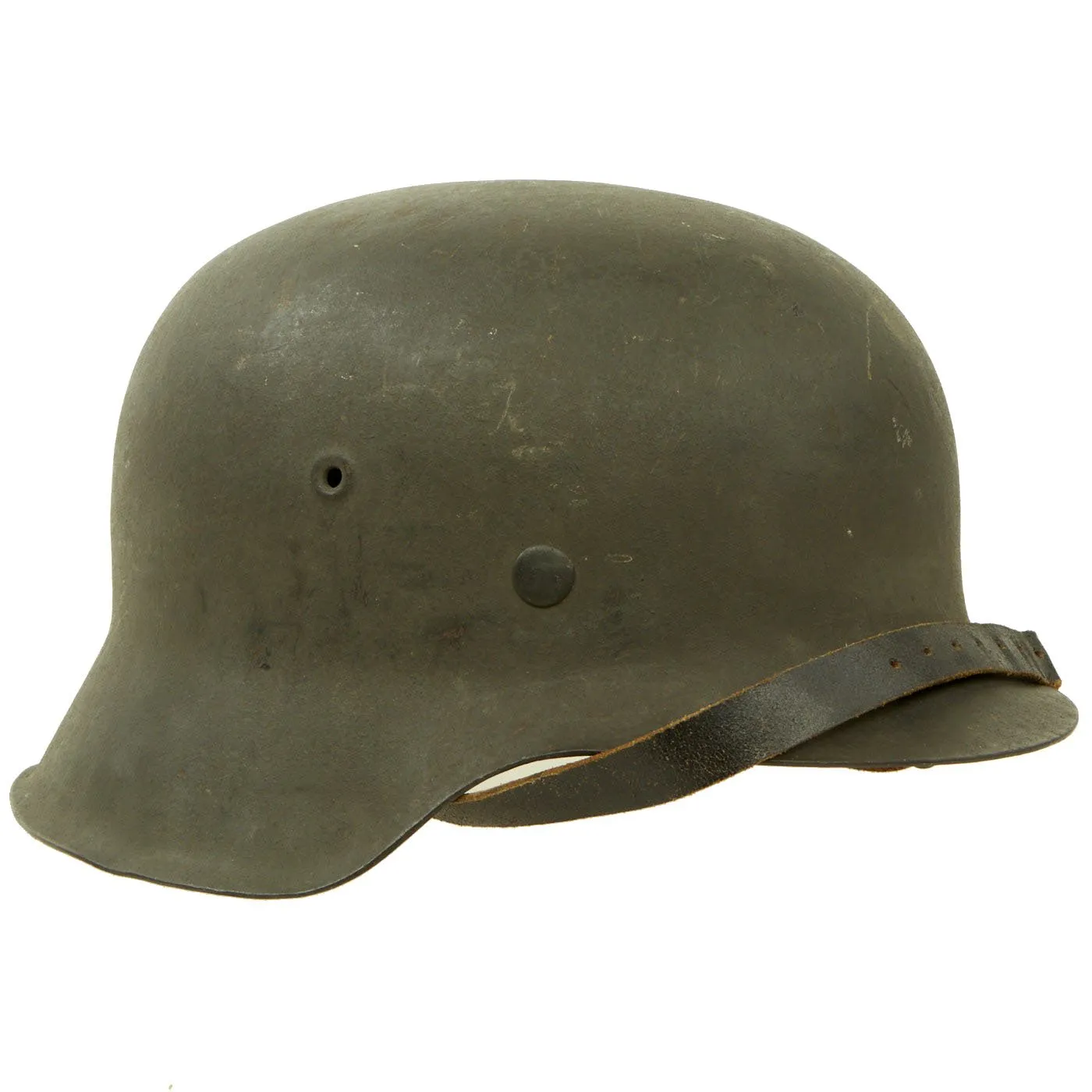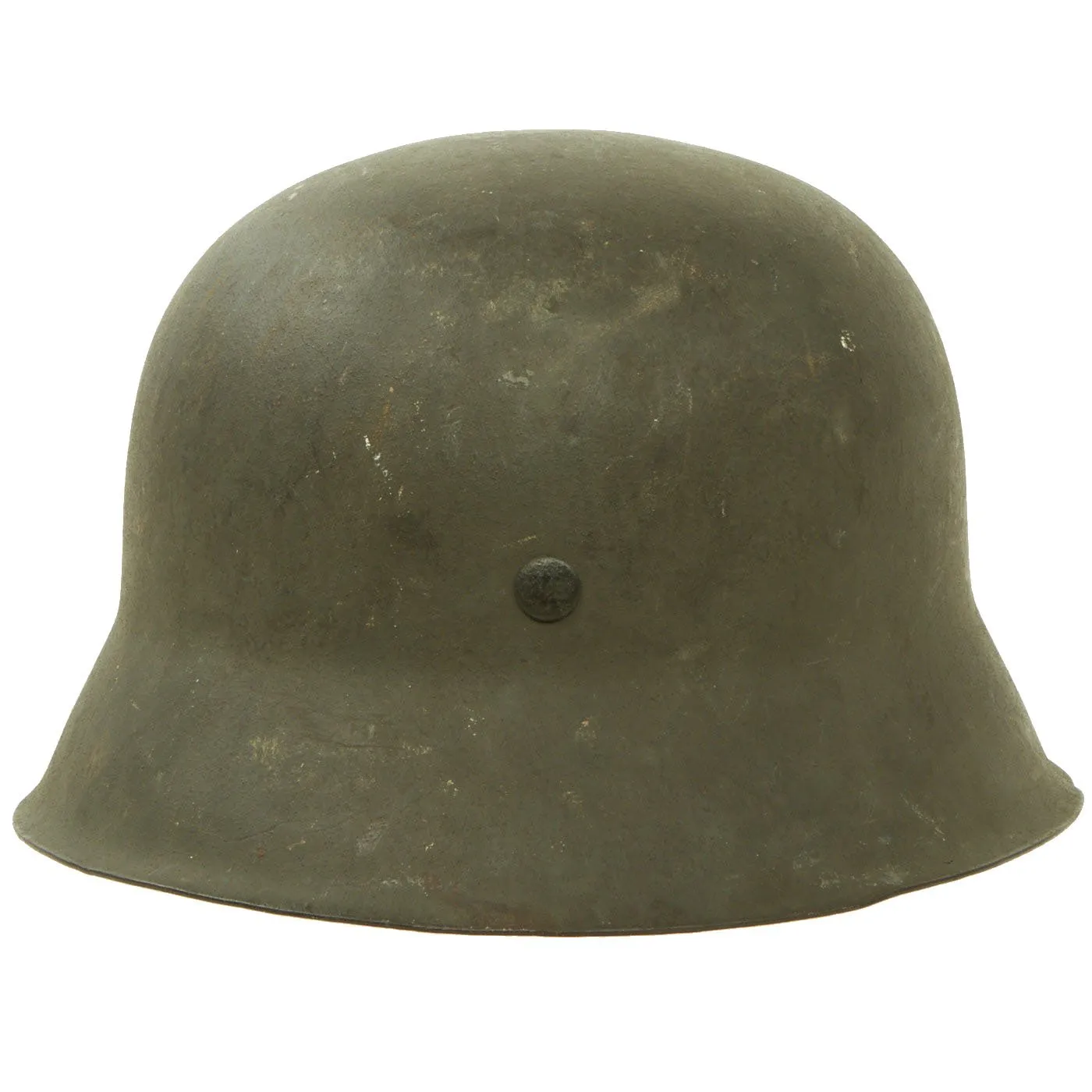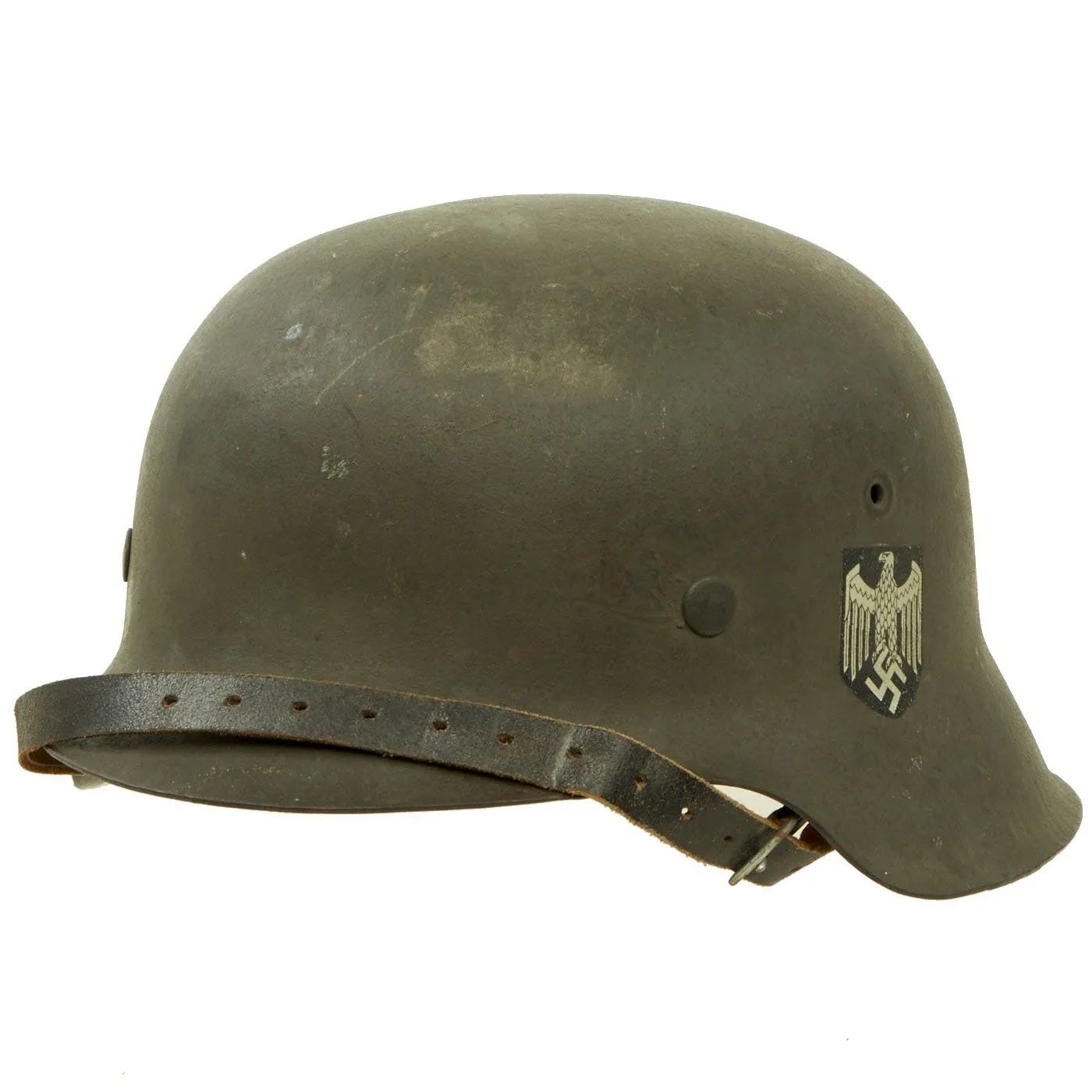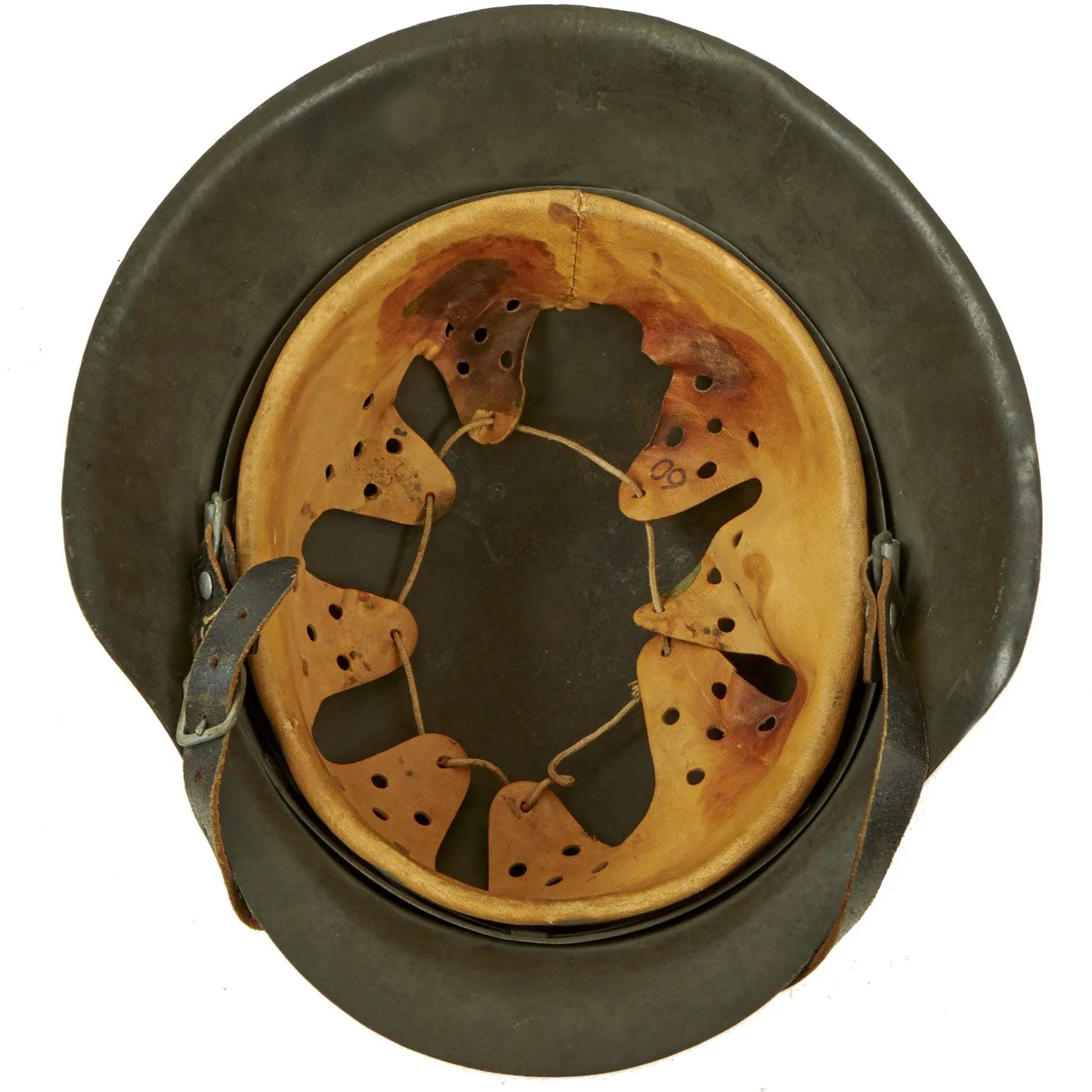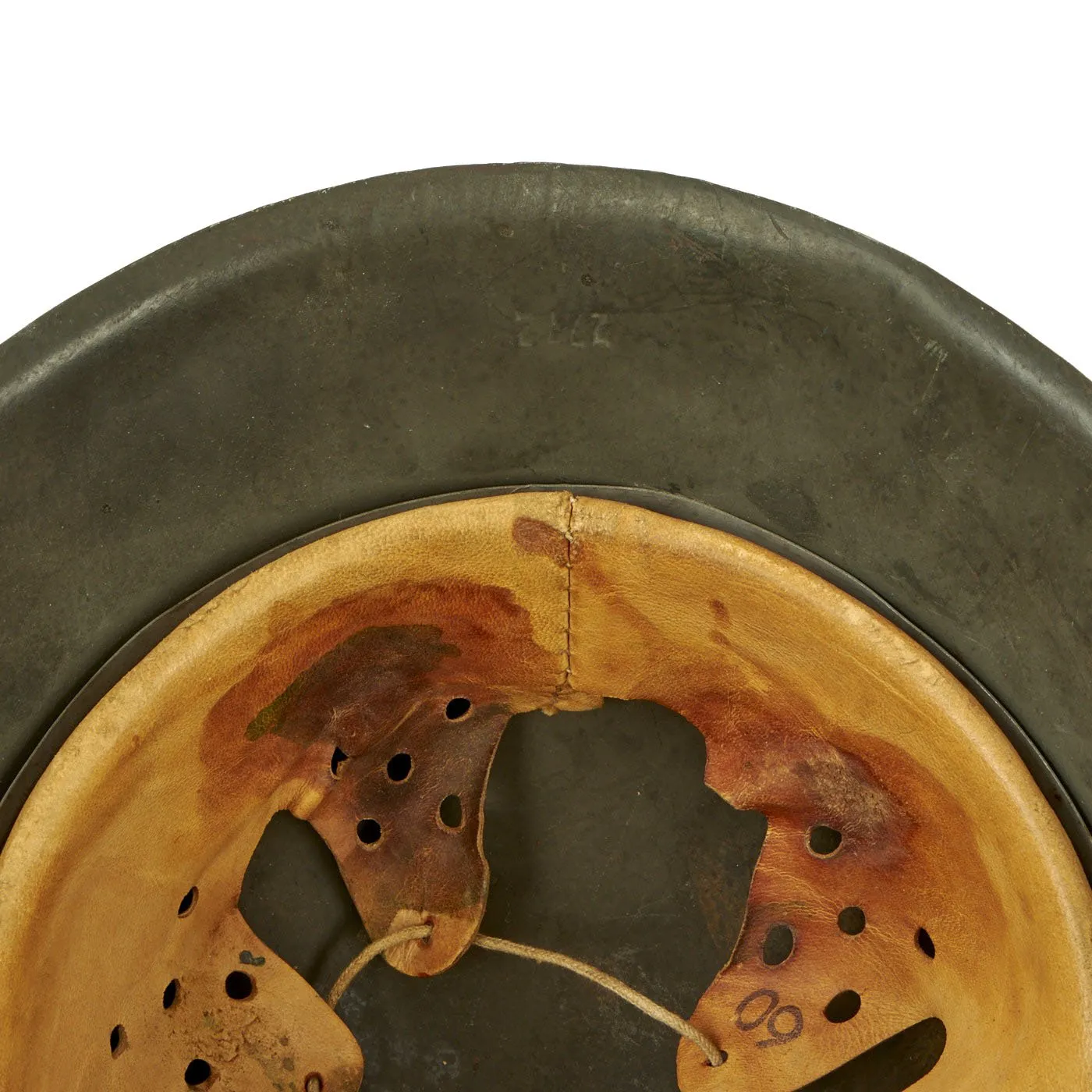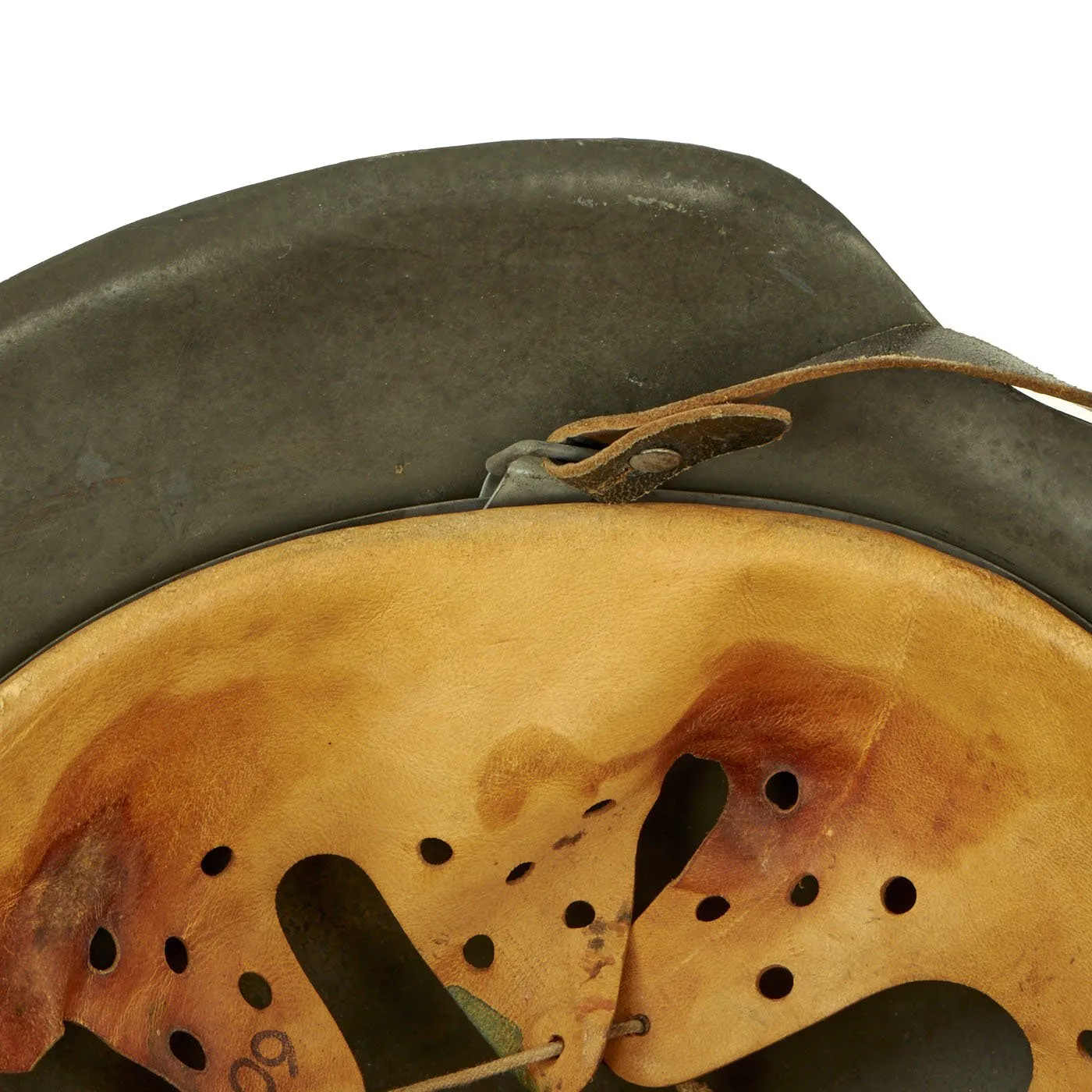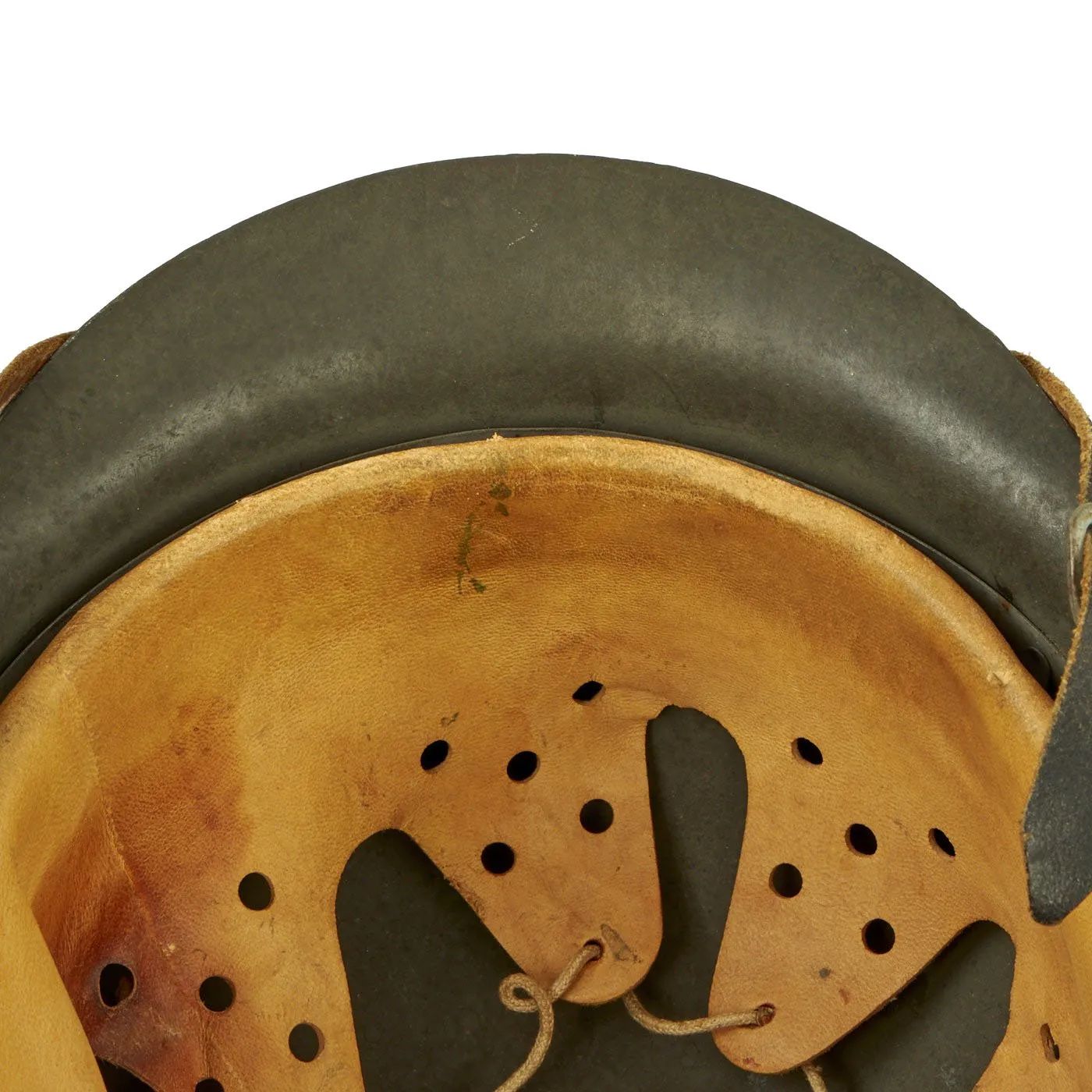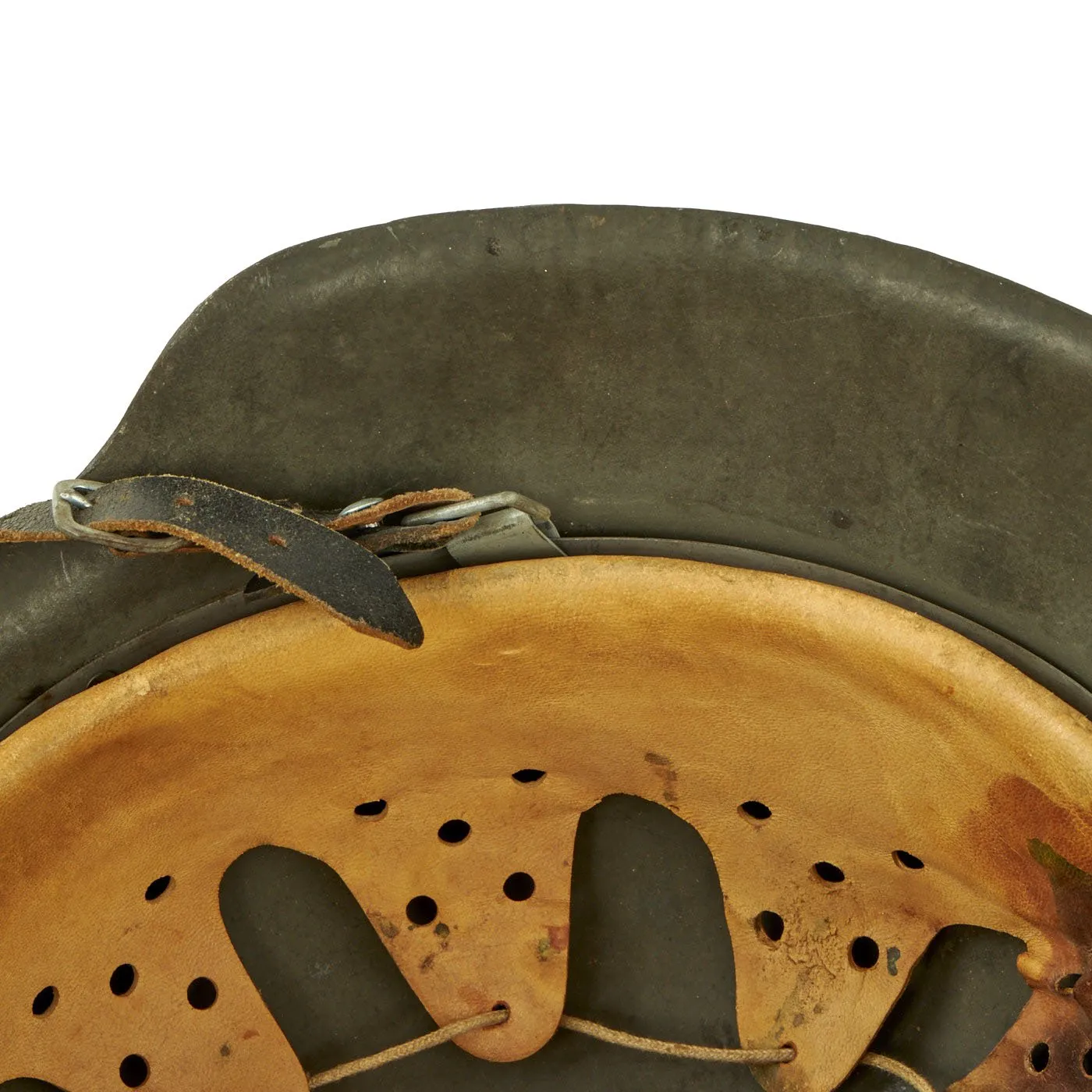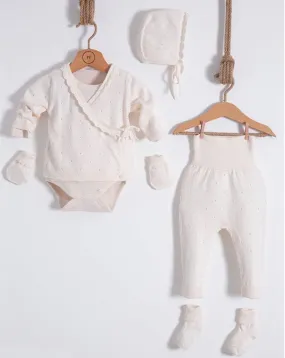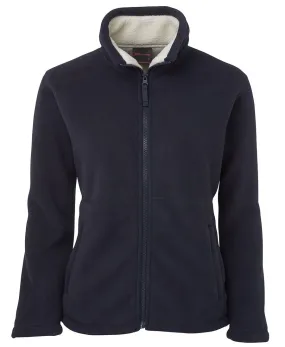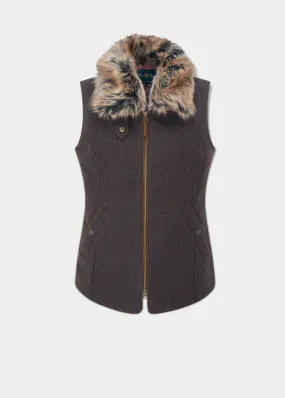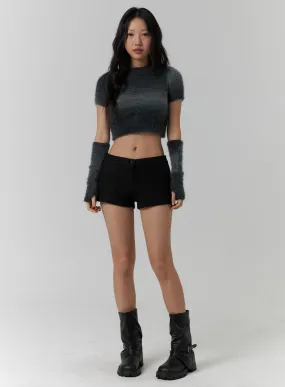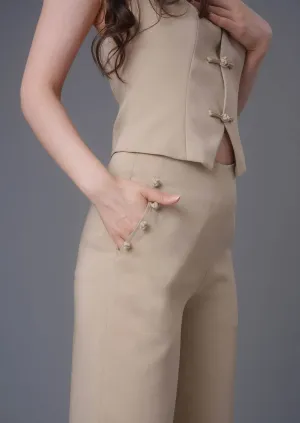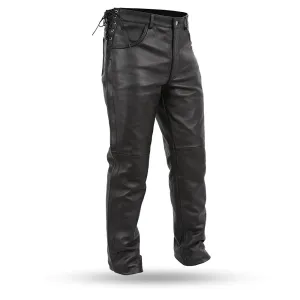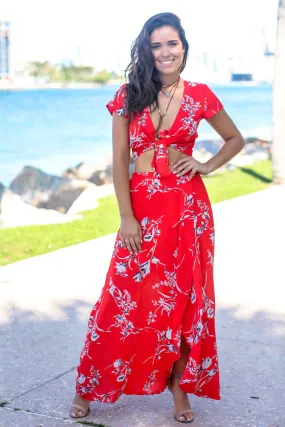Original Item: Only One Available. This is an excellent all original example of a late war German Model 42 Steel helmet. As far as we can tell, it is close to unissued. There is very little sign of wear to the shell, and the liner looks to only have damage from water dripping on it during long storage.
This stamped sheet steel construction helmet retains close to 100% of its original textured paint, with only a bit of scuffing and dirt from storage. The left side of the helmet features an excellent Heer eagle decal, which is retained almost completely, with just one small spot where it has flaked off. This is pretty much as good as they get for M42 Heer Single decal helmets, and it is in one of the largest sizes offered! These do not come around often at all.
The reverse, interior, neck guard apron is batch number stamped, 7772 and the interior, left side, apron has traces of the original maker stamping, but it was very lightly stamped. We can only make out 8 at the end, while the other parts are unclear. Most likely, it was originally marked "ET68", for manufacture by Eisenhuttenwerk AG of Thale, located in the Harz district in Saxony, Germany. Size 68 is a rare extra large size that can accommodate liners from 60cm to 61cm or US 7 1/2 to 7 5/8. Size 68 shells are the hardest to find and are therefore more valuable to a collector.
All three original liner retaining pins are intact and have all of the original paint on the ends. The interior of the helmet still has the original very good condition M31 leather liner with all eight fingers, with the original securing string. The leather is mostly soft and supple, except for some areas where water looks to have dripped on the leather over the years. The side of the galvanized steel liner band is marked 68 n.A. / 60, indicating that this is a size 60 liner for a size 68 shell. There is also a clear size 60 stamped on the leather itself. It is also maker marked and dated on the other side:
Metall-Lederverarbeitung W.Z.
1943
Bln.- Ch'burg 5
This indicates production by the metal and leather working company Werner Zahn, based in Berlin - Charlottenburg, in the year 1943, which fits right into the late war period. The helmet also has a complete original chin strap, which is in very good condition, with only light wear. It is marked with RBNr. 0/0384/0041.
Overall an excellent extra large size M42 Single Decal Heer Army helmet, completely correct! M42 helmets of this quality and size are nearly impossible to find on the market. This is an item that will only continue to appreciate in value over time.
The first "modern" steel helmets were introduced by the French army in early 1915 and were shortly followed by the British army later that year. With plans on the drawing board, experimental helmets in the field, ("Gaede" helmet), and some captured French and British helmets the German army began tests for their own steel helmet at the Kummersdorf Proving Grounds in November, and in the field in December 1915. An acceptable pattern was developed and approved and production began at Eisen-und Hüttenwerke, AG Thale/Harz, (Iron and Foundry Works), in the spring of 1916.
These first modern M16 helmets evolved into the M18 helmets by the end of WWI. The M16 and M18 helmets remained in usage through-out the Weimar Reichswehr, (National Defence Force, Circa 1919-1933), era and on into the early years of the Third Reich until the development of the smaller, lighter M35 style helmet in June 1935.
In 1934 tests began on an improved Stahlhelm, whose design was a development of World War I models. The Eisenhüttenwerke company of Thale carried out prototype design and testing, with Dr. Friedrich Schwerd once again taking a hand.
The new helmet was pressed from sheets of molybdenum steel in several stages. The size of the flared visor and skirt was reduced, and the large projecting lugs for the obsolete armor shield were eliminated. The ventilator holes were retained, but were set in smaller hollow rivets mounted to the helmet's shell. The edges of the shell were rolled over, creating a smooth edge along the helmet. Finally, a completely new leather suspension, or liner, was incorporated that greatly improved the helmet's safety, adjustability, and comfort for each wearer. These improvements made the new M1935 helmet lighter, more compact, and more comfortable to wear than the previous designs.
The Army's Supreme Command officially accepted the new helmet on June 25, 1935 and it was intended to replace all other helmets in service.
The M1935 design was slightly modified in 1940 to simplify its construction, the manufacturing process now incorporating more automated stamping methods. The principal change was to stamp the ventilator hole mounts directly onto the shell, rather than utilizing separate fittings. In other respects, the M1940 helmet was identical to the M1935. The Germans still referred to the M1940 as the M1935, while the M1940 designation were given by collectors.
The last wartime upgrade to the standard helmet took place on 6 July 1942 at the request of the Army High Command. The rolled edge found on M1935 and M1940 helmets was discontinued as a measure of economy. On 1 August 1942 the first M1942 helmets were placed into production, and this was the model produced until late in the war, when most factories were captured or stood idle due to material shortages.




